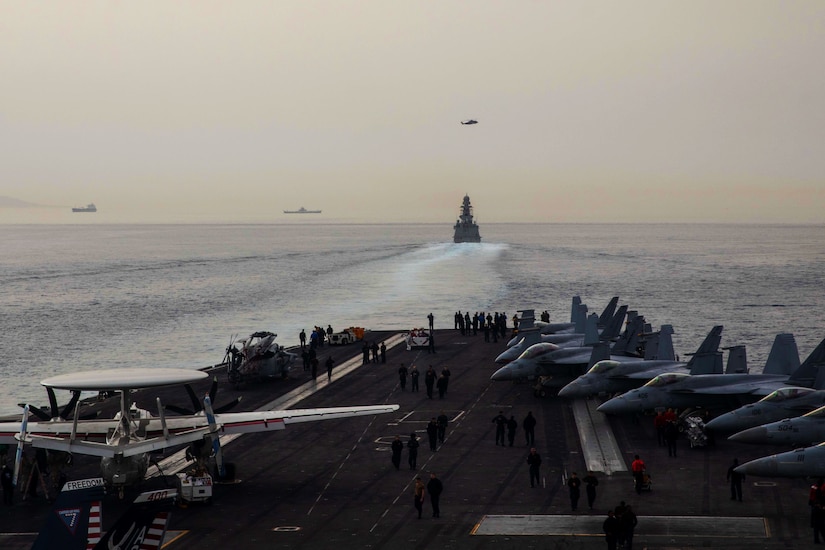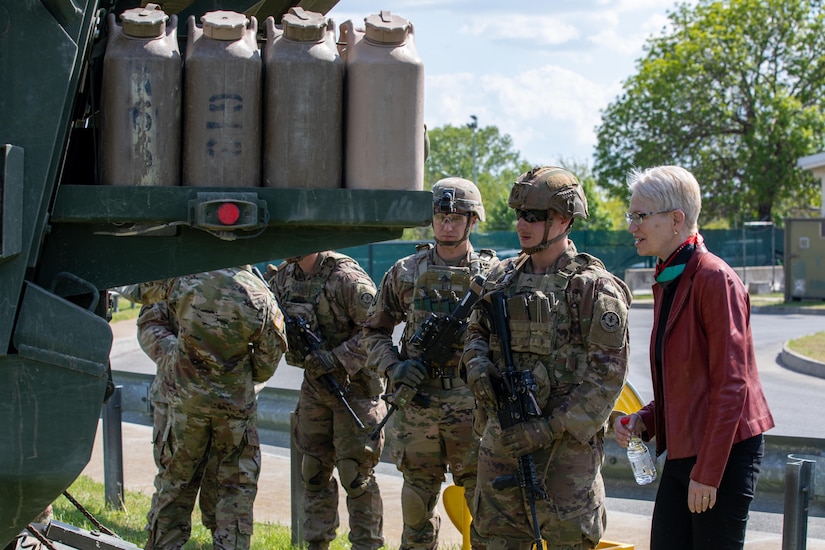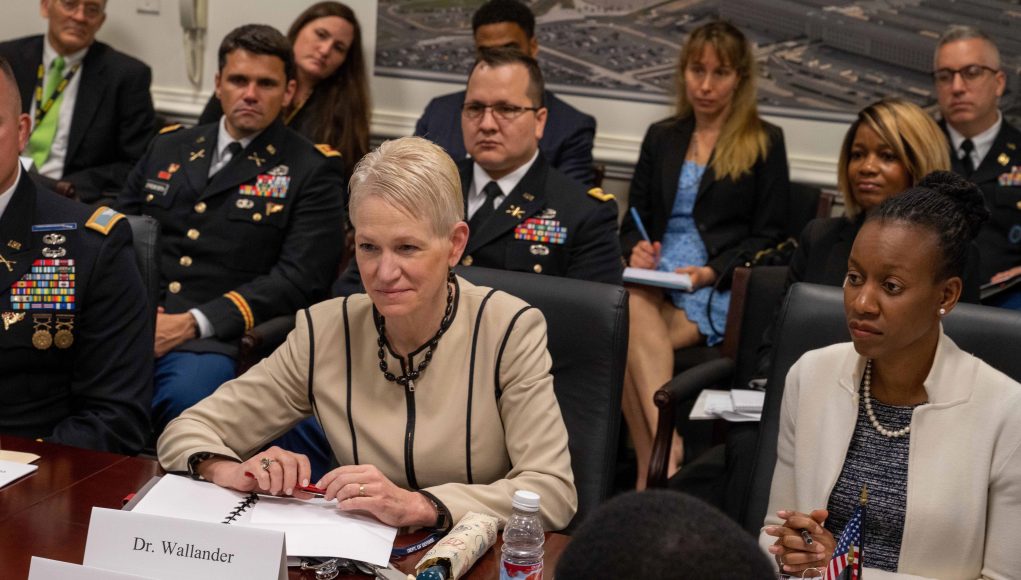Pentagonul : Rusia foloseste 80% din fortele sale terestre in razboiul asupra Ucrainei, a spus Celeste Wallander, secretar asistent al apararii pentru probleme de securitate internationala.
Wallander a fost întrebata în mod specific despre invadarea Ucrainei de către Rusia. Ea a spus că capacitățile terestre ale Rusiei „au fost semnificativ degradate”, cu zeci de mii de victime și pierderea probabilă a jumătate din principalele sale tancuri de luptă. Oficialii estimează că probabil 80% din forța terestră a Rusiei este dedicată invaziei.
„Aceasta fiind spuse, Rusia păstrează o bază industrială de apărare”, a spus Wallander.
Rusia a produs sisteme de arme într-un ritm mai lent și cu mai puțină tehnologie din cauza sancțiunilor, a spus ea. „Rusia s-a bazat, de asemenea, pe parteneriate pe care trebuie să le umple unele dintre lacune, în special Iranul, achiziționând UAV [vehicule aeriene fără pilot] pentru a putea lovi ținte ucrainene, iar Rusia continuă să desfășoare o forță aeriană destul de substanțială”, ea. a spus. „Deci, este o imagine mixtă”, scrie stripes.com
Allies and partners are an integral part of the U.S. National Defense Strategy, the assistant secretary of defense for international security affairs, said today.
Speaking at a Center for a New American Security event, Celeste Wallander addressed questions about Russia’s invasion of Ukraine, but her main emphasis was on the importance of allies and partners and what they bring to the deterrence table. Wallander’s portfolio includes Europe, the Middle East and Africa.
Secretary of Defense Lloyd J. Austin III has often said the United States’ network of allies is the country’s main advantage over any potential challenger.
The classic example of the importance of allies is the North Atlantic Treaty Organization, she said. “Each and every ally” brings capabilities to deterrence, Wallander said.
The alliance has been incredibly successful, deterring the Soviet Union until it dissolved in the 1990s. NATO was the basis for intervention in the Balkans. NATO invoked Article 5, which states that an attack on one nation of the alliance is an attack on all, only once in its history—after the 9-11 attacks on the United States.

NATO has changed and adapted to each new security era, and it’s adapting again as Russia is seeking to overset the international rules-based infrastructure that has kept peace among great powers since the end of World War II.
Each NATO ally brings capabilities to the alliance that contributes to the “credible combat power that NATO can mount and make clear to a potential adversary — most specifically Russia” — that an attack on an alliance country would be a losing proposition.
Since Russia invaded Ukraine, NATO has taken action, building more battle groups in the eastern frontline states. The nations also provide the capabilities required for air policing and managing the air domain, she said. At sea, NATO allies bring different naval capabilities to the problem of maritime domain awareness that encompasses everything from the Baltic Sea to the Mediterranean to the North Atlantic.
“It is that broad scope of incredible combat power that comes from combined … armed forces and the jointness of our militaries, which brings something different to bear to deterrence,” she said.
While NATO represents 31 allies to the United States, there are many other allies stretching from the Middle East to the Indo-Pacific. Each ally, she said, is important to U.S. defense.

It’s not just military capabilities, but intelligence and information that allies bring, she said. The United States has worked to share intelligence and information with allies and partners, and such efforts will continue. She also said the conflict in Ukraine highlighted the need for allies to more closely bind their various defense industrial bases together to produce military capabilities more quickly and efficiently.
Wallander was asked specifically about Russia’s invasion of Ukraine. She said Russia’s ground capabilities “have been significantly degraded,” with tens of thousands of casualties and the probable loss of half of its main battle tanks. Officials estimate that probably 80 percent of Russia’s ground force is dedicated to the invasion.
“That said, Russia retains a defense industrial base,” Wallander said.
Russia has been producing weapon systems at a slower pace and with less technology due to sanctions, she said. “Russia has also drawn upon partnerships that it has to fill in some of the gaps, most notably Iran, acquiring UAVs [unmanned aerial vehicle] to be able to strike Ukrainian targets, and Russia continues to field a pretty substantial air force,” she said. “So, it is a mixed picture.”
Spotlight: Support for Ukraine
Russia continues to take casualties in Ukraine, but as they take these losses, “it is also learning how to adapt,” Wallander said. “It is learning tactically, operationally and somewhat strategically how to adapt, and it is drawing [from] lessons learned. We’re seeing some of those play out in how Russia is conducting, for example, the operations right now in eastern Ukraine.”













